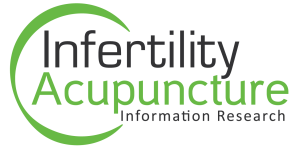Effects of acupressure at the Sanyinjiao point on primary dysmenorrhoea.
Chen HM, Chen CH.
Assistant Professor, Chung Hwa College of Medical Technology, Tainan, Taiwan.
AIM: This paper presents the findings of a study that assessed the effects of acupressure at the Sanyinjiao point on symptoms of primary dysmenorrhoea among adolescent girls. BACKGROUND: Dysmenorrhoea is the most common gynaecological disorder among adolescents. Traditional Chinese acupressure derived from acupuncture is a non-invasive technique. Despite renewed interest in the use of acupressure, relatively few studies have been undertaken to examine its effects on primary dysmenorrhoea. METHODS: An experimental study was conducted between December 2000 and August 2001. Participants were female students attending a technical college in Taiwan. None of the 69 participants had a prior history of gynaecological disease or secondary dysmenorrhoea, and all were rated higher than five for pain on a visual analogue scale from 0 to 10. The experimental group (n = 35) received acupressure at Sanyinjiao (above the ankle) while the control group (n = 34) rested for 20 min, while the control group underwent rest in the school health centre for 20 min without receiving acupressure. Fifty participants (30 experimental, 20 control) completed the 4-6-week follow-up session. Five instruments were used to collect pretest and post-test data at each session: (1) Visual Analogue Scale for pain; (2) the Short-Form McGill Pain Questionnaire; (3) the Menstrual Distress Questionnaire; (4) the Visual Analogue Scale for anxiety; and, for the experimental group only, (5) the Acupressure Self-Assessment Form. Data were analysed using the chi-square test, two-sample t-test and repeated measures two-way anova. RESULTS: Acupressure at Sanyinjiao during the initial session reduced the pain and anxiety typical of dysmenorrhoea. In the self-treatment follow-up session, acupressure at Sanyinjiao significantly reduced menstrual pain but not anxiety. Thirty-one (87%) of the 35 experimental participants reported that acupressure was helpful, and 33 (94%) were satisfied with acupressure in terms of its providing pain relief and psychological support during dysmenorrhoea.
CONCLUSION: The findings suggest that acupressure at Sanyinjiao can be an effective, cost-free intervention for reducing pain and anxiety during dysmenorrhoea, and we recommend its use for self-care of primary dysmenorrhoea.
J Adv Nurs. 2004 Nov;48(4):380-7.
